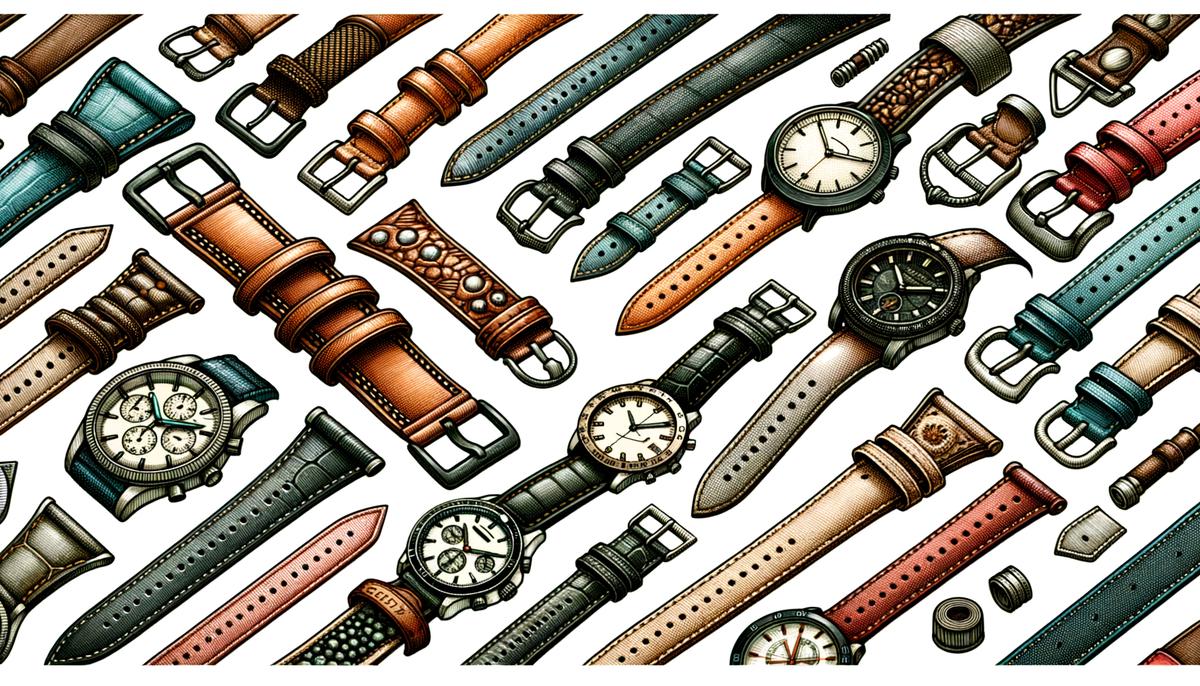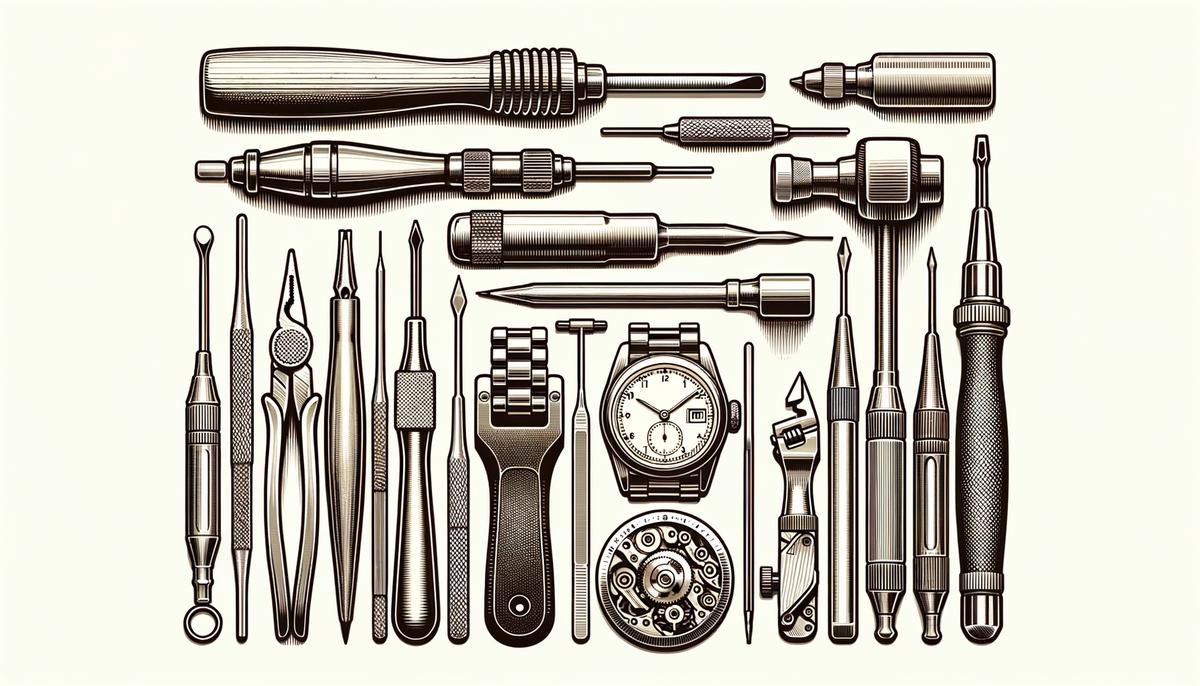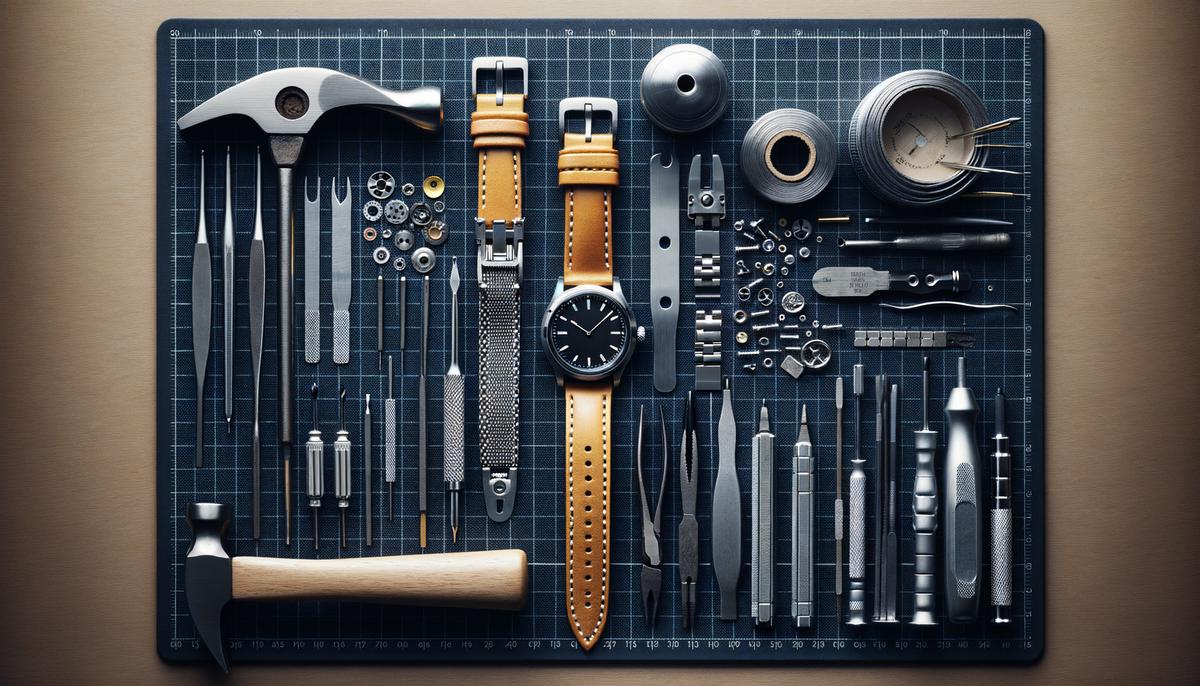Choosing the right watch strap is a crucial part of ensuring your timepiece fits comfortably and suits your style. With a variety of straps available, understanding how to adjust each type for a perfect fit is essential. This article will guide you through the different watch straps and provide tips on how to adjust them, ensuring your watch not only looks great but feels great too.
Understanding Watch Strap Types
Understanding Watch Straps and Their Adjustment Techniques
When selecting a watch, the strap is more than an accessory—it’s a statement about style and comfort. Different straps suit varied preferences and lifestyles. Here’s a rundown of common watch strap types and how to adjust them for a perfect fit.
Leather Straps: Classic and elegant, leather straps add a touch of class to any watch. They typically feature a buckle similar to a belt, allowing for easy size adjustments. To adjust, simply slide the pin to the hole that best fits your wrist. Remember, leather can stretch over time, so you might need to tighten it after extended wear.
Metal Bracelets: Durable and flashy, metal bracelets are popular for their longevity and style. Adjusting them usually requires removing or adding links. This is something you might want a jeweler to do, although with patience and the right tools (a small punch and a hammer), it can be done at home. The clasp also often has small adjustments for a finer fit.
NATO Straps: Originating from the British Ministry of Defence, NATO straps are a comfortable and secure option. Made of nylon, they’re perfect for rugged use. Adjustment is straightforward: slip the strap through the watch lugs and over the wrist, then tuck the excess strap through the rings. The length can be easily adjusted for any wrist size, and they can be swapped out in seconds for a new look.
Rubber/Silicone Straps: Ideal for sports watches, rubber, and silicone straps are waterproof and flexible. They usually come with a buckle and can be adjusted by choosing different holes on the strap. Some models feature a tuck catch for the strap’s end, securing it against the wrist.
Mesh Straps: Sleek and modern, mesh straps offer a unique look. They usually feature a sliding clasp that you can adjust by lifting a tab or loosening a screw, sliding it along the strap to the desired length, and then securing it back in place. This type allows for very precise adjustments for comfort.
Adjusting Your Watch Strap: Regardless of the type, the goal is to find a comfortable fit—not too tight, but secure enough that your watch doesn’t slide around on your wrist. Remember, the fit might need to be adjusted based on seasonal changes to your wrist size or if the strap material stretches or shrinks over time.
In each case, care and attention are key. Whether opting for the refined elegance of leather, the durability of metal, the simplicity of NATO, the flexibility of rubber and silicone, or the precision of mesh, the right adjustment method ensures your watch not only fits perfectly but also complements your lifestyle and fashion choices. With the right tools and a bit of patience, adjusting your watch strap can be a simple task, allowing you to enjoy comfort and style hand in hand.

Gathering Necessary Tools
Adjusting a wristwatch strap is a straightforward task when you have the right tools at hand. Whether you’re aiming for a snug fit or a bit more breathing room, the key to an efficient adjustment lies in using specific equipment designed for watchband modifications. Here’s a detailed walkthrough of the essential tools needed for adjusting your wristwatch strap efficiently:
- Spring Bar Tool: This is a must-have in your watch adjustment toolkit. Featuring a forked end and a pointed end, it’s specially designed to remove and insert the spring bars that hold your watch strap in place. Use the forked end to compress and release the spring bar from the lug holes, a crucial step for changing straps or making adjustments.
- Pin Pusher: For metal bracelet adjustments, a pin pusher is invaluable. This tool is used to drive out the pins that hold the bracelet links together. Some watchbands feature tiny screws instead of pins; in such cases, a set of precision screwdrivers is necessary.
- Watchmakers Hammer: A watchmakers hammer, often small and lightweight, is used in conjunction with the pin pusher. After partially pushing the pin out with the pin pusher, you may need to gently tap it with this hammer to remove it completely. This tool is also useful for reinserting pins or screws securely.
- Link Remover Tool: Some prefer using a link remover tool, a device that holds the bracelet in place while you push the pin out. It’s particularly effective for bracelets with stubborn pins and provides more control and stability than using a pin pusher and hammer alone.
- Tweezers: A pair of fine-pointed tweezers is essential for handling small watch parts like spring bars, pins, and screws. They offer precision and prevent the frustration of dropping and losing tiny components.
- Precision Screwdrivers: If your watch strap uses screws instead of pins for adjustments, a set of precision screwdrivers is a must-have. The sizes of these screws can vary, so a set with multiple sizes ensures you’re prepared for any adjustments.
- Magnifying Glass or Loupe: Sometimes, the details matter, especially when working with tiny watch parts. A magnifying glass or a jeweler’s loupe helps you see small details and ensures accuracy in your adjustments.
- Soft Work Mat: Protect your watch from scratches and give yourself a comfortable working surface with a soft work mat. A clean, non-slip surface is ideal for keeping small parts from rolling away and provides a cushion for your watch.
Before you start any adjustment, ensure you have these tools and a clean, well-lit workspace. Familiarize yourself with the specific type of adjustment your watch strap requires, and proceed with care. Remember, patience and the right tools are the keys to a successful watch strap adjustment.

Adjusting the Watch Strap
Adjusting a Watch Strap for The Perfect Fit: A Step-by-Step Guide
Getting the right fit for your watch strap isn’t just about comfort; it’s about ensuring the longevity of your watch and avoiding unnecessary wear and tear. Whether you’re adjusting a classic leather band or a modern metal bracelet, the steps are straightforward. However, before diving into the specifics, let’s stress the significance of having the right tools on hand. Without them, you risk damaging your watch. Commonly needed tools include a spring bar tool, precision screwdrivers, and a soft work mat to prevent scratching.
Step 1: Assess and PrepareStart by assessing your watch strap. Is it too loose or too tight? Your watch should feel secure on your wrist without leaving marks or sliding. Lay your watch on a soft work mat, and arrange your tools within reach. This preparatory step minimizes the risk of scratches or damage during adjustment.
Step 2: Identify the Adjustment TypeBased on the type of strap, identify the adjustment mechanism. For metal bracelets, you’ll often deal with removable links or a sliding clasp. For leather, rubber, or silicone straps, pinpoint the correct hole for the buckle pin. Make sure you’re familiar with how your specific strap adjusts before proceeding to avoid common pitfalls.
Step 3: Make the AdjustmentFor leather, rubber, and silicone straps, carefully move the buckle to the appropriate hole that best fits your wrist. It may take a few tries to find the perfect fit, but be patient.
In the case of metal bracelets, use a pin pusher or a link remover tool to adjust the number of links. Use the spring bar tool for engaging with the bracelet’s spring bars, and precision screwdrivers for bracelets held together by screws. Remember, always work in a well-lit area and use a magnifying glass or loupe if you have difficulty seeing small parts.
Step 4: Test the FitOnce you’ve made the adjustment, it’s time to test the fit. Secure the watch on your wrist and go about your usual tasks. It shouldn’t pinch, squeeze or slide around. A well-fitted watch strap will feel comfortable throughout the day, adapting to both movement and any natural changes in wrist size due to temperature.
Step 5: Fine-Tune as NecessaryIf the fit isn’t quite right, don’t hesitate to readjust. Sometimes, getting the perfect fit requires a bit of fine-tuning. This step is crucial; as seasons change, so does your wrist size. Leaving room for slight adjustments is a wise move.
Remember, adjusting a watch strap isn’t a one-time task. Regular checks and adjustments ensure your watch remains a perfect companion, melding seamlessly with your daily life while maintaining its integrity. Whether it’s a vintage piece with a rich history or a modern timepiece reflecting cutting-edge design, the right fit underscores its beauty and function.

Adjusting your watch strap to find the perfect fit is a simple yet important task. It enhances the comfort and overall experience of wearing your timepiece. By following the steps outlined, you can achieve a fit that’s just right for you, ensuring your watch remains a cherished accessory that complements every outfit and occasion. Remember, a well-adjusted watch strap speaks volumes about your attention to detail and your commitment to personal style and comfort.
Experience the magic of Writio – an AI content writer for websites. This page was written by Writio.
Leave a Reply